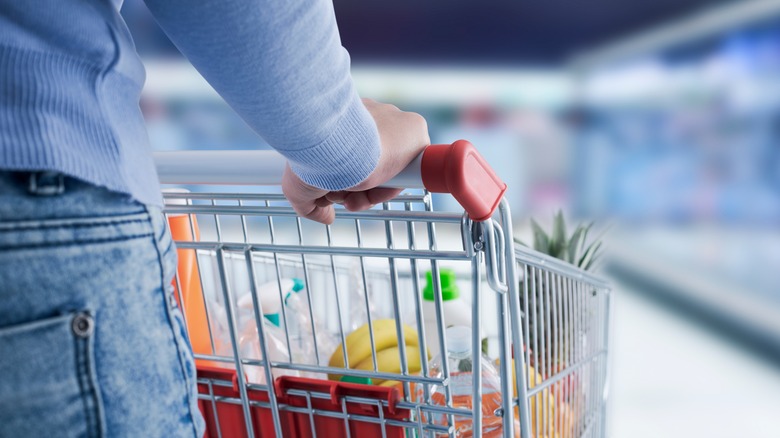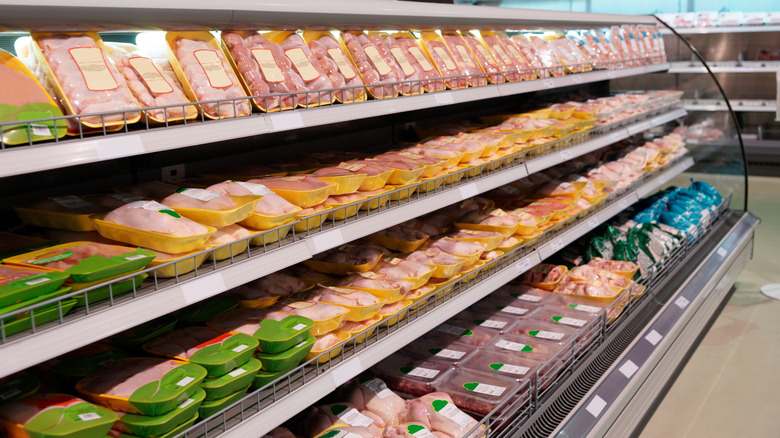The Best Time To Add Chicken To Your Grocery Cart
According to the Centers for Disease Control and Prevention, chicken is the most popular meat in the United States. However, chicken comes with some big risks. Improper handling of raw chicken can result in serious foodborne illnesses. This is pretty common knowledge and so most home cooks take extra care to ensure they don't serve or eat even slightly undercooked chicken, but, regardless, the CDC says approximately a million people each year still come down with poultry-related food poisoning. The fact is, cooking and handling raw poultry requires greater care than just checking to be sure the chicken is cooked to 165 degrees Fahrenheit before chowing down.
One seemingly innocent place where bacteria-laden poultry juices like to hang out? The grocery store. Food Safety News reported on a study that found U.S. grocery shoppers frequently spread poultry juices throughout the grocery store after picking up raw poultry for purchase, potentially endangering both themselves and other shoppers. In the study, researchers found those poultry juices were frequently transferred over to shopping carts, other items for sale throughout the store, personal items (like bags), or even other family members.
How to safely shop for chicken
To best avoid the spread of illness-causing bacteria from raw poultry, the U.S. Department of Agriculture has a few suggestions, starting with when during your shopping trip you should head to the meat department. To keep bacteria from transferring to your other grocery items or your personal items, add chicken to your grocery cart last. Additionally, try to keep raw meats and seafood separate from the other items in your cart (versus just tossing that pack of chicken wings onto your bag of apples). If the grocery store provides plastic bags with which to wrap the packaged chicken, use them. Once you get home from the grocery store, put raw meats away first and make sure they end up in the fridge or freezer within two hours of leaving the grocery store. Ideally, the USDA says, you'd go straight from the store to your home.
Texas A&M AgriLife Extension further recommends ensuring raw meats aren't bagged along with other items at the check-out lane, and that you don't let children handle raw meat packaging in the grocery store. All of this can go a long way to ensuring that you keep yourself and your family safe from salmonella, which the Centers for Disease Control and Prevention says is the most prominent source of food poisoning and is found on about 4% of all chicken in the grocery store.

